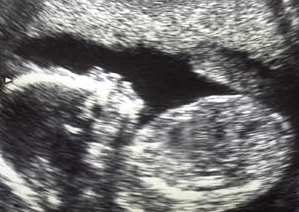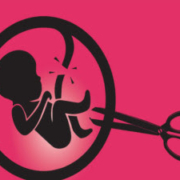Ireland’s Gain, England’s Loss
A fascinating new comparative analysis of the effects of abortion on a whole country’s population and health has been published this week.
Ireland and Northern Ireland both have far more restrictive laws on abortion than England, Wales and Scotland and thus provide a neat comparison of statistical data between the different countries. A new report shows how Ireland and N Ireland benefit significantly from their near complete ban on abortion in a number of ways.
The report, Ireland’s Gain, links Ireland’s low abortion rate to low incidences of breast cancer and comparative good mental health among women when compared with those in England, Scotland and Wales. Ireland also shows a low incidence of maternal and infant conditions known to be abortion sequelae: still births, low weight births whether in singleton or multiple births, preterm or premature births, cerebral palsy and maternal deaths. Moreover, whilst it is impossible to give an accurate figure, the report suggests that the current population of Ireland would be around 100,000 lower if pro-abortion legislation had existed there.
The study has been compiled by actuary, Patrick Carroll, from PAPRI (Pension and Population Research Institute). He compared statistical data on abortions carried out on women resident in Ireland and Northern Ireland from 1968-2010 (supplied by the Department of Health and ONS) with the corresponding data for mainland Britain and discussed the implications for women’s health. For years, Carroll (amongst others) has claimed that not only do statistics bear out a link between abortion and breast cancer but that rates of breast cancer in the future can be accurately predicted using abortion figures.
The report shows that, not surprisingly, the birth rate in Ireland and N Ireland is much higher than the European average. Thus the population is more youthful, near to replacement level and they are less reliant on immigration than other European countries.
The interesting, and particularly disturbing, aspect of this analysis is Carroll’s claim that if Scottish abortion rates had applied to N Ireland between 1968-2010, the population would be 1.71 million in 2010 in contrast to the real figure of 1.8 million. So freely available abortion would account for around 100,000 less people. The younger age profile in Ireland has positive implications for pensions, social security costs, consumer demand and reduced reliance on exports.
Another finding is that Ireland and N Ireland both benefit from lower rates of pre-term births, stillbirths and low-weight births. Whilst causality cannot automatically be assumed here, it is interesting that the link between abortion and preterm delivery is widely recognised now: The latest RCOG report suggests that the increased risk of preterm delivery is between 27%-62%. Moreover the risk increases with each abortion. Other research has looked at more than a million pregnancies in Scotland over 26 years and found that women who have had one termination are 34% more likely to have a premature birth than those pregnant for the first time.
Carroll’s own conclusions are that:
‘Rates of stillbirths in the two jurisdictions are now lower than those in Britain. Presumably the lower incidence of induced abortion among women in Ireland and Northern Ireland has helped to accomplish this health gain….’
‘Ireland has a much lower incidence of low-weight babies (less than 2500gm) born than England & Wales and Northern Ireland also has a lower incidence of this condition. This…can be linked to the lower incidence of induced abortion among women on the island of Ireland.’
‘This analysis finds the preterm birth rate in Northern Ireland is low and there is a low rate of premature births in Northern Ireland. These findings suggest the critical necessity to further evaluate the effects of abortion on preterm birth, especially in the light of new information in preterm birth in its relationship to abortion.’
Carroll also draws a link with breast cancer rates. He reports that ‘The Cancer Atlas of the United Kingdom and Ireland’, published in 2005, found a low rate of female breast cancer incidence throughout the island of Ireland. In fact, rates during 1998-2000 were lower than in the EU (15 countries), UK, USA, Canada and Australia.
Of course, breast cancer rates are also linked to other factors such as age of childbearing, screening, breastfeeding as well as diet and other environmental factors. Nevertheless, abortion should still be acknowledged as one factor linked to breast cancer, among others:
‘The low incidence of breast cancer among women from the island of Ireland becomes more explicable if the low abortion rate among women from the island is acknowledged as a relevant factor in conjunction with the continuation of higher fertility.’
Ireland’s Gain also compares mental health rates between the countries, using data on anti-depressant usage and suicide rates, however these rates are harder to quantify and directly link to abortion. So the conclusion from this section is simply that the studies presented should encourage more questions to be asked about the impact of abortion on mental health, and these questions need to be brought to the attention of public health organisations.
So what can we draw from these new findings?
The novelty of this comparison, with its grounding in reliable national demographic statistics, is useful. And Ireland and N Ireland do provide us with a neat case study of a population with restrictive abortion laws, which can be relatively easily compared to England, Scotland and Wales with their far more liberal legislation.
However some caution is needed in interpretation of these findings, which may indeed show correlation, but not necessarily causality. Nevertheless, the findings fit with other research findings on breast cancer and preterm births, and of course the aborting of thousands of babies in the womb will inevitably directly impact national demographic profiles.
Even though we do need to interpret this with caution, the precautionary principle should still apply (‘If an action or policy has a suspected risk of causing harm to the public or to the environment, in the absence of scientific consensus that the action or policy is harmful, the burden of proof that it is not harmful falls on those taking the action’). Unless the data can definitely be disproved, there are some major questions here for those responsible for healthcare resourcing, birth rates, the health of women and babies and, of course, campaigners pushing to liberalise the abortion laws in Ireland.
As the recent review by the AMRC on abortion and mental health showed, abortion does not bring benefits for women’s mental health. This new report shows that neither does it benefit women’s physical health, nor that of their babies, nor their pensions and nor their country’s demographic profile. It is to Ireland’s gain that they have maintained their restrictive abortion legislation, and to Britain’s loss that we have such liberal laws.













Leave a Reply
Want to join the discussion?Feel free to contribute!